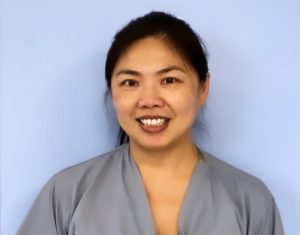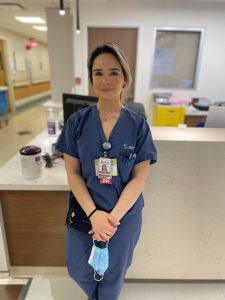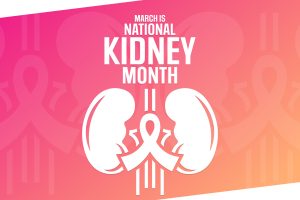This month, we are pleased to shine our Employee Spotlight on Choi Au-Yeung, Registered Respiratory Therapist.
Registered Respiratory Therapist.
Choi has been a respiratory therapist 24 years, 20 of those years at Flushing Hospital Medical Center. She grew up in Queens and attended Grover Cleveland High School, then went on to study at SUNY Stony Brook where she graduated with a BS degree in Respiratory Care.
Choi currently resides on Long Island with her husband and four children, ages 13, 14, 15, and 17. In her spare time, she volunteers at the concession stand at her children’s school during home sporting events to raise money for the athletic department. She also helps her husband coach the volleyball team and score games for their daughters’ Catholic Youth Organization team.
When she has time off, she enjoys vacationing with her family. Some of the places she frequents are Mexico, Hong Kong, Hawaii, Outer Banks North Carolina, Myrtle Beach South Carolina, Virginia, and Florida. She loves to eat all different types of food, especially Italian and Indian. Choi’s favorite music is from the 80’s and 90’s. She considers herself fairly athletic and has completed three New York City Marathons. She is a firm believer in participating in all kinds of sports, in which she says helps to clear her head and make her feel good.
Family and a handful of close friends is what she considers the most important. She emphasizes to her children the value and importance of family.
Choi enjoys working at Flushing Hospital very much because of the great people she works with. She truly considers her colleagues as her work family. Most of them have met her family and vice versa. She feels very fortunate that her department is very supportive of one another and considerers the department leadership the best. We are fortunate to have her as part of our team and we look forward to her continuing with us for many more years.
All content of this newsletter is intended for general information purposes only and is not intended or implied to be a substitute for professional medical advice, diagnosis or treatment. Please consult a medical professional before adopting any of the suggestions on this page. You must never disregard professional medical advice or delay seeking medical treatment based upon any content of this newsletter. PROMPTLY CONSULT YOUR PHYSICIAN OR CALL 911 IF YOU BELIEVE YOU HAVE A MEDICAL EMERGENCY.









